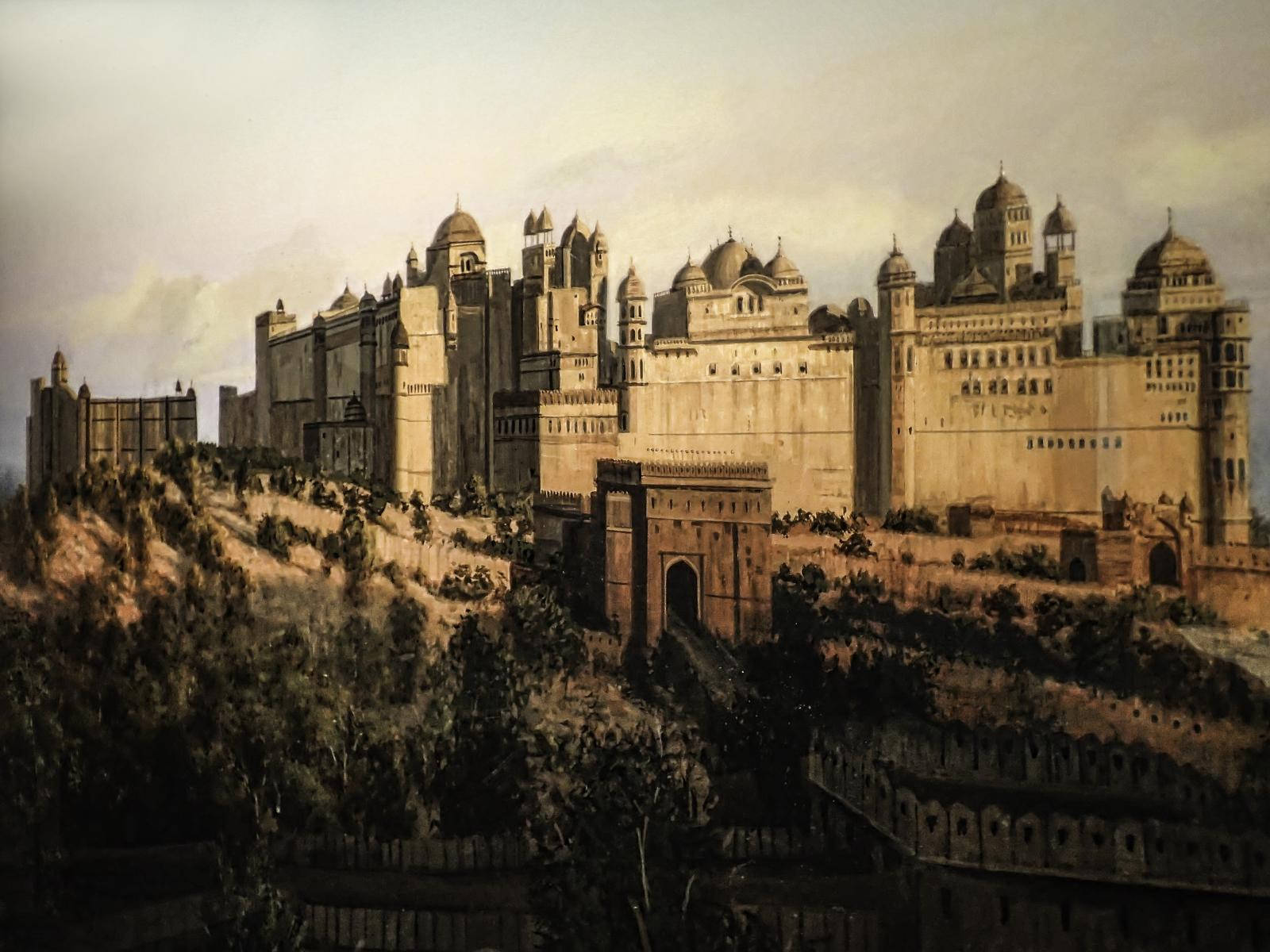Matte Painting
by Andy Boyd
Today, worlds imagined. The University of Houston presents this series about the machines that make our civilization run, and the people whose ingenuity created them.
Filmmakers love to transport us to places unseen. Imagine panoramas of the ancient city of Rome in the original Ben Hur, or landscapes of the Ewoks' home world in Star Wars: Return of the Jedi. Both films were produced before the age of digital filmmaking. How were such breathtaking backdrops created?
With painting, you might answer. Just paint a backdrop and film it. And you'd be right, but only to a point. The real trick is to paint a backdrop and put action in front of it. That's easy with today's digital technology. Shoot the action in front of a uniformly colored screen, frequently a shade of green. When editing the film on a computer, make the green transparent, then simply lay it over your background. It takes just a few clicks of the mouse.

E. A. Boyd with a chroma key compositing (green) screen. Photo Credit: E. A. Boyd
Problem is, before the days of digital filming this wasn't possible. You could lay two filmstrips on top of one another, but the resulting image would show everything from both. Filmmakers were up to the challenge, however, developing a technique called matte painting. The development of matte painting is attributed to filmmaker Norman Dawn, who first used it in the 1907 film Missions of California.
The technique was simple, but pulling it off required skill. Matte painters painted backgrounds, but did so on glass. In this way, they could leave parts of the glass unpainted. By mounting the glass painting in front of the camera, action could then be filmed through the unpainted glass. The painting served as an elaborate matte for framing the action.

Matte painting of Pankot Palace from Indiana Jones and the Temple of Doom. Photo Credit: Flickr
Of course, to create a believable illusion, scenes and sets were designed to disguise the border between the set and the matte. It also helped to blur things a bit. If you're not looking for the border where the matte meets the action, you won't see it, though if you are looking, it's often surprisingly easy to see.
The list of famous scenes employing the technique is astounding. Gone With the Windis filled with matte paintings as backdrops. Dorothy and her entourage from the Wizard of Oz first see poppy fields and the distant Emerald City as a matte painting. The final scene in Raiders of the Lost Ark, where the ark is unceremoniously tucked away in a warehouse, was completed using the visual effect. And episodes four through six of the Star Wars epic couldn't possibly have carried us to a galaxy far, far away without matte painting.

Ralph McQuarrie matte painting of the Death Star equator. Photo Credit: Flickr
Over the years, matte painting developed as its own art form, with recognized artists and ardent enthusiasts. But digital filmmaking took its toll, and the days of painted mattes are a thing of the past, replaced by inexpensive software and online stores brimming with professional images. Today, anyone with the desire and creativity can make their very own movie backdrops. But skill and artistry are still required for the finest productions, giving rise to a new generation of digital matte painters.
Mitchell Stuart Matte Painting DemoReel 2014 from Mitchell Stuart on Vimeo.
I'm Andy Boyd at the University of Houston, where we're interested in the way inventive minds work.
(Theme music)
Many thanks to listener Douglas Ashby for bringing this topic to my attention.
Early matte painting techniques differed in the details of how they were performed. I've here focused on the earliest method, and the easiest to explain on air.
Copyright restrictions limit what images can be included on this website. The following references, which include images, descriptions, and videos, are all highly recommended.
The MattePainting.org website: http://mattepainting.org/. Accessed January 31, 2017.
Matte Shot: A Tribute to Golden Era Special FX. From the website: http://nzpetesmatteshot.blogspot.com/. Accessed January 31, 2017.
Visual Effects: How Matte Paintings are Composited into Films. From the RocketStock website: https://www.rocketstock.com/blog/visual-effects-matte-paintings-composited-film/. Accessed January 31, 2017.
This episode was first aired on February 2, 2017